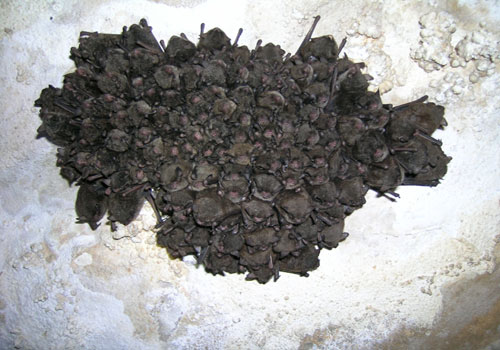White-nose syndrome (WNS) threatens several species of insectivorous bats in the National Park Service. Since 2006, millions of bats have died. More information about this disease is available here.
Economic Impact
Bats contribute significantly to their ecosystems, no matter where they live. But the bats that have been most affected by WNS eat insects. A colony of bats can eat hundreds of thousands of insects in an hour.

Photo by Steve Thomas
If bats aren't available to eat these insects, they may cause a lot of problems. The insects may damage forests, destroy agricultural crops, or spread diseases among humans. In fact, the economic burden of rapid bat losses is especially hard on the agricultural sector, topping $3.7 billion/year.
Species Protection
More than 45 species of bats live in national parks. Scientists confirmed WNS in 10 species:
- Big brown bat (Eptesicus fuscus)
- Cave bat (Myotis velifer)
- Eastern small-footed bat (Myotis leibii)
- Gray bat (Myotis grisescens) – endangered
- Indiana bat (Myotis sodalis) – endangered
- Little brown bat (Myotis lucifugus)
- Northern long-eared bat (Myotis septentrionalis) – threatened
- Southeastern bat (Myotis austroriparius)
- Tri-colored bat (Perimyotis subflavus)
- Yuma bat (Myotis yumanensis)
Three of these species are on the federal list of threatened or endangered species. Laws are in place to protect these bats and their habitats. However, other plants, animals, and ecosystems likely experience effects from the quick population declines of some bats. Scientists are learning how the population reduction of these bats may influence other organisms. For example, if fewer bats are available to eat insects, then other changes may happen as a result. As WNS spreads, scientists expect the possibility of impact on national parks to be high.
Last updated: August 17, 2020
